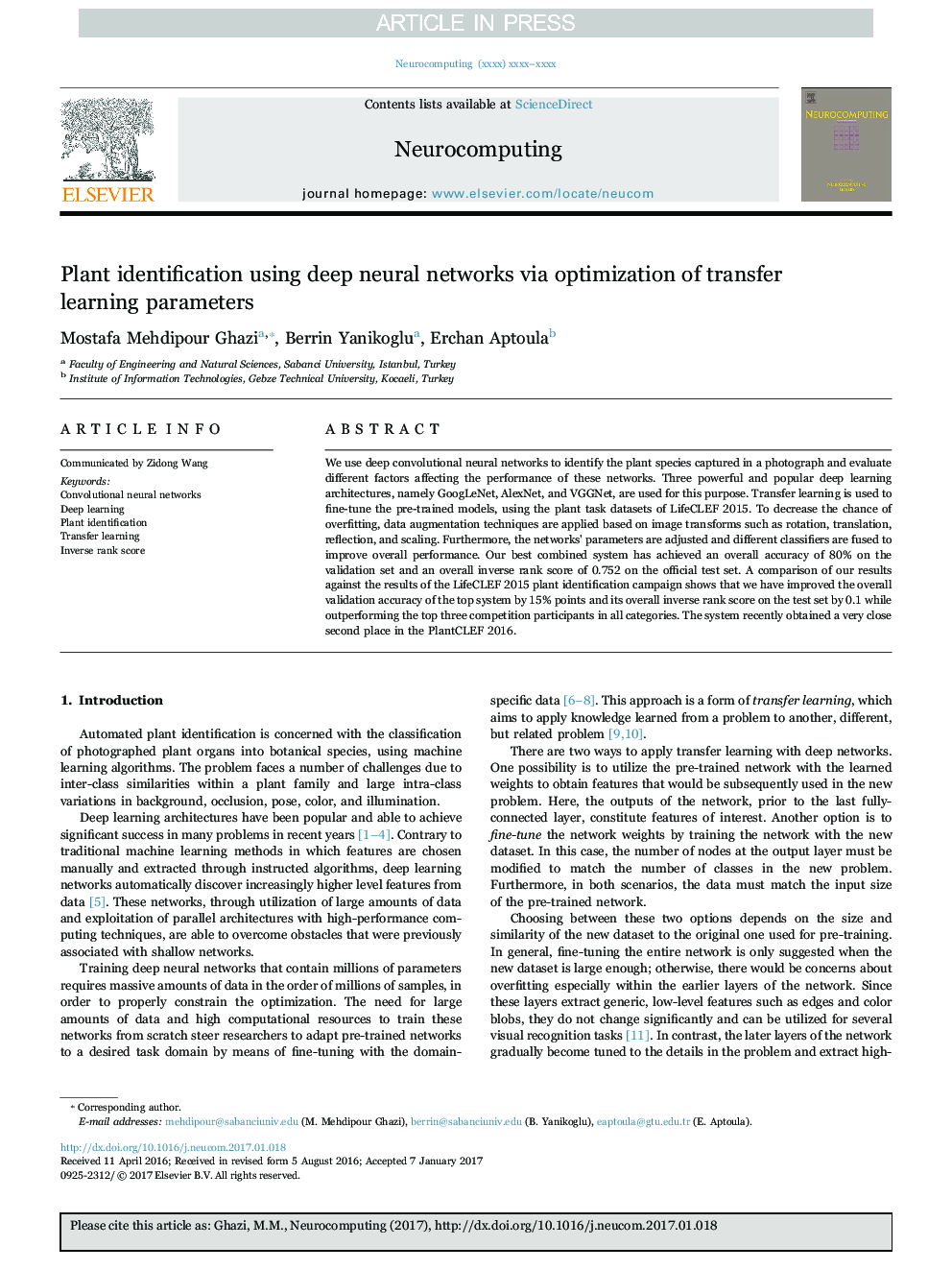| Article ID | Journal | Published Year | Pages | File Type |
|---|---|---|---|---|
| 4947860 | Neurocomputing | 2017 | 8 Pages |
Abstract
We use deep convolutional neural networks to identify the plant species captured in a photograph and evaluate different factors affecting the performance of these networks. Three powerful and popular deep learning architectures, namely GoogLeNet, AlexNet, and VGGNet, are used for this purpose. Transfer learning is used to fine-tune the pre-trained models, using the plant task datasets of LifeCLEF 2015. To decrease the chance of overfitting, data augmentation techniques are applied based on image transforms such as rotation, translation, reflection, and scaling. Furthermore, the networks' parameters are adjusted and different classifiers are fused to improve overall performance. Our best combined system has achieved an overall accuracy of 80% on the validation set and an overall inverse rank score of 0.752 on the official test set. A comparison of our results against the results of the LifeCLEF 2015 plant identification campaign shows that we have improved the overall validation accuracy of the top system by 15% points and its overall inverse rank score on the test set by 0.1 while outperforming the top three competition participants in all categories. The system recently obtained a very close second place in the PlantCLEF 2016.
Related Topics
Physical Sciences and Engineering
Computer Science
Artificial Intelligence
Authors
Mostafa Mehdipour Ghazi, Berrin Yanikoglu, Erchan Aptoula,
